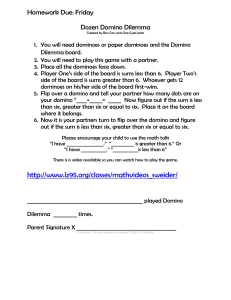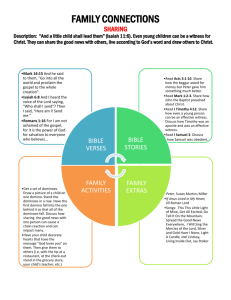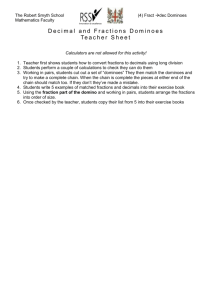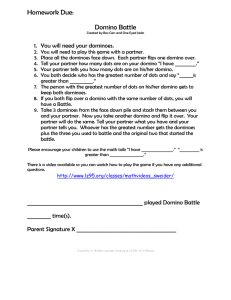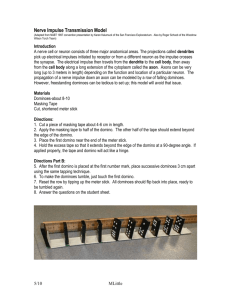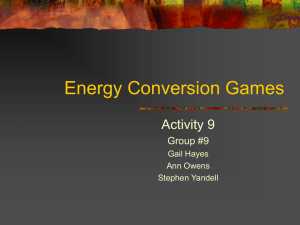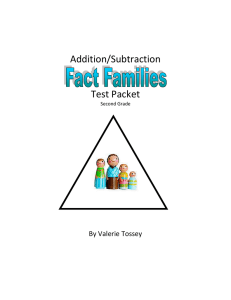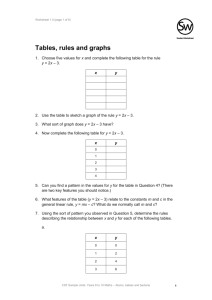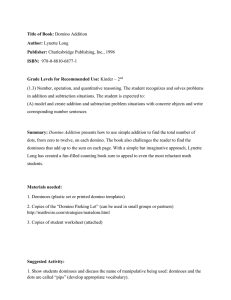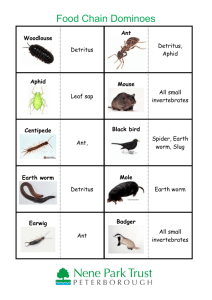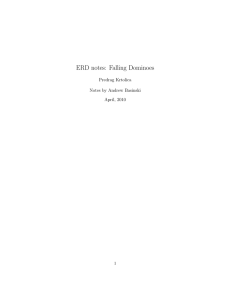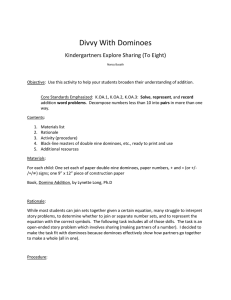Types of Energy
advertisement
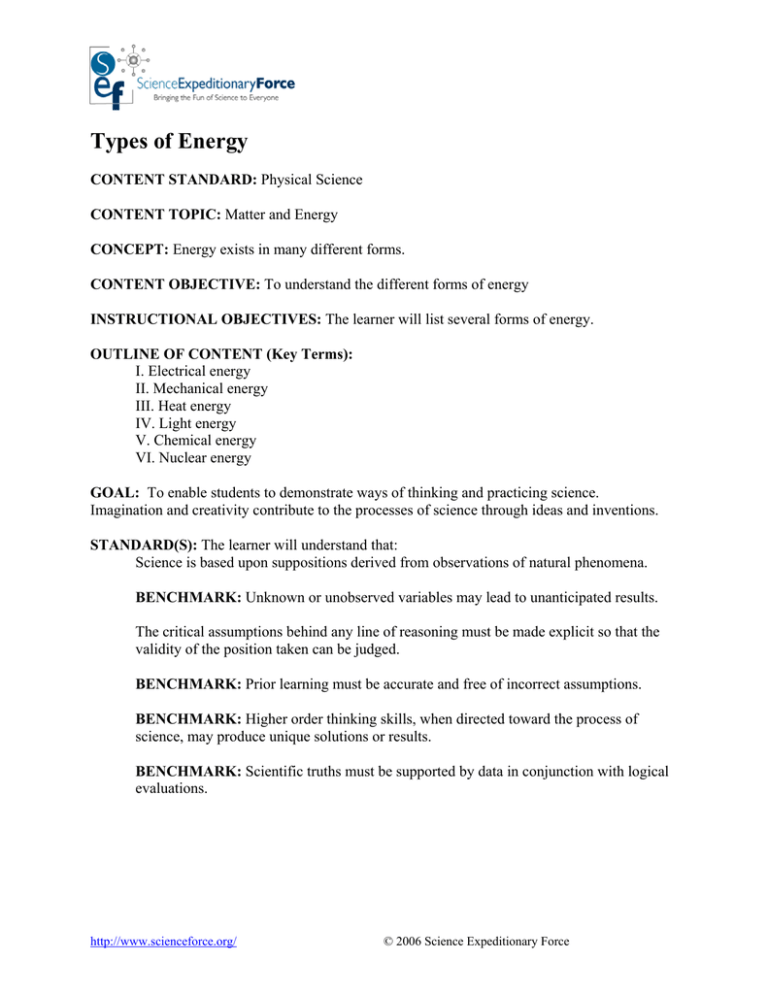
Types of Energy CONTENT STANDARD: Physical Science CONTENT TOPIC: Matter and Energy CONCEPT: Energy exists in many different forms. CONTENT OBJECTIVE: To understand the different forms of energy INSTRUCTIONAL OBJECTIVES: The learner will list several forms of energy. OUTLINE OF CONTENT (Key Terms): I. Electrical energy II. Mechanical energy III. Heat energy IV. Light energy V. Chemical energy VI. Nuclear energy GOAL: To enable students to demonstrate ways of thinking and practicing science. Imagination and creativity contribute to the processes of science through ideas and inventions. STANDARD(S): The learner will understand that: Science is based upon suppositions derived from observations of natural phenomena. BENCHMARK: Unknown or unobserved variables may lead to unanticipated results. The critical assumptions behind any line of reasoning must be made explicit so that the validity of the position taken can be judged. BENCHMARK: Prior learning must be accurate and free of incorrect assumptions. BENCHMARK: Higher order thinking skills, when directed toward the process of science, may produce unique solutions or results. BENCHMARK: Scientific truths must be supported by data in conjunction with logical evaluations. http://www.scienceforce.org/ © 2006 Science Expeditionary Force CLASSROOM CONNECTORS TIME REQUIRED: 30 minutes MATERIALS: SET: Name the different forms of energy (have students give an example of each): • electrical • mechanical (wind mill) • heat (stove) • light (radiant, sun) • chemical (stomach, batteries) • nuclear (geothermal) INSTRUCTION: Kinder and 1st: Emphasis on: the different types of energy and energy can do work. Have the students write or draw pictures of the different types. 2nd thru 5th:Have the students name the different forms of energy and write them in their notebooks. Nuclear energy is the most difficult form to understand. Notebooks: Draw a picture of an activity you enjoy. (pause) Label the form of energy used in your drawings. (pause) Show and discuss your picture with your neighbor. (pause) As I walk around the room, I will hold up some of your pictures put thumbs up/down if you agree with the drawings and the way they have been labeled. (response) Look around the room and point to an object that changes electricity into light, sound, or pictures. (pause) Point to an object that is an example of mechanical energy (pencil sharpener). Point to light energy. (Sun) http://www.scienceforce.org/ © 2006 Science Expeditionary Force ACTIVE PARTICIPATION: Let’s make a chain reaction: 1. Place dominoes in a line. Make the line as long as possible. 2. Have one student push the first domino. This will show how one domino hits another domino until all of the dominoes have fallen. 3. Line the dominoes in rows. • The first row has one domino. • The second has two dominoes. The two dominoes are behind and on each side of the first row domino. • The third row should have three to four dominoes. • The fourth row should have six to eight dominoes. Use as many dominoes as possible, doubling the number for each row. • When the first domino is pushed over in this arrangement, they will fall much faster than the first demonstration. Why? 4. Have the students try different configurations and rows of dominoes knocking them over. Do some configurations work better than others? CLOSURE: Today we have learned that there are many different types of energy. • Show several pictures and ask the students name the type of energy used. • We must not waste energy. Can you think of ways to conserve each different type of energy? • Is some energy “better” than others? If so which ones and why? http://www.scienceforce.org/ © 2006 Science Expeditionary Force
